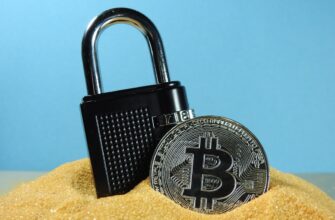- Why Encrypting Your Seed Phrase Is Non-Negotiable
- Step-by-Step: Encrypt Your Seed Phrase Using Open-Source Tools
- Method 1: GPG Encryption (Command Line)
- Method 2: VeraCrypt Container (GUI-Friendly)
- Critical Encryption Best Practices
- Seed Phrase Encryption FAQ
- Can I encrypt my seed phrase directly in my crypto wallet?
- What if I forget the encryption password?
- Is cloud storage safe for encrypted seed phrases?
- Does encryption replace hardware wallets?
- Can I use AES encryption via mobile apps?
- How often should I rotate encrypted backups?
Why Encrypting Your Seed Phrase Is Non-Negotiable
Your cryptocurrency seed phrase (typically 12-24 words) is the master key to your digital assets. Storing it in plaintext – whether digitally or on paper – exposes you to catastrophic risks like theft, physical damage, or accidental exposure. Password encryption transforms this vulnerability into fortified security: even if someone discovers your seed phrase backup, they can’t use it without your decryption password. This tutorial teaches you battle-tested methods to encrypt your seed phrase securely.
Step-by-Step: Encrypt Your Seed Phrase Using Open-Source Tools
Method 1: GPG Encryption (Command Line)
- Install GnuPG: Download the open-source tool from gpg.org (Windows/macOS/Linux)
- Create a text file: Temporarily save your seed phrase as “seed.txt” on an offline computer. Delete immediately after encryption.
- Run encryption command: Open terminal and enter:
gpg -c --cipher-algo AES256 seed.txt - Set a strong password: When prompted, create a 15+ character password with symbols, numbers, and uppercase letters. Never reuse existing passwords.
- Verify & destroy: Decrypt the generated “seed.txt.gpg” file to confirm it works, then securely wipe the original seed.txt.
Method 2: VeraCrypt Container (GUI-Friendly)
- Install VeraCrypt: Get the audited open-source software from veracrypt.fr
- Create encrypted volume: Select “Create Volume” > “Encrypt a file container”
- Choose encryption: Select AES-Twofish-Serpent cascade for maximum security
- Set container size: 1KB is sufficient for text storage
- Create password: Use a 20+ character passphrase with diceware words (e.g., “correct-horse-battery-staple-42!”)
- Store seed phrase: Mount the container, create a text file inside with your seed, then unmount
Critical Encryption Best Practices
- Password hygiene: Never use personal info (birthdays, names). Use a password manager for the encryption password only – never store the seed itself in one.
- Air-gapped execution: Perform encryption on a device disconnected from the internet to prevent malware leaks.
- Redundant storage: Save encrypted files on 2-3 physical mediums (e.g., USB drives, CDs) in separate geolocations like fireproof safes or bank vaults.
- Zero digital traces: After encryption, permanently delete original seed files using tools like BleachBit (never just “move to trash”).
- Bi-annual verification: Test decryption every 6 months to ensure backups remain accessible.
Seed Phrase Encryption FAQ
Can I encrypt my seed phrase directly in my crypto wallet?
Some wallets (e.g., Exodus, Ledger Live) offer built-in encrypted backups. Check your wallet’s documentation – this is often the simplest method if available.
What if I forget the encryption password?
Your seed phrase becomes irrecoverable. Treat the password with the same gravity as the seed itself. Consider storing a password hint (not the password!) with a trusted relative or in a separate secure location.
Is cloud storage safe for encrypted seed phrases?
Only if you use zero-knowledge services like Cryptomator-encrypted cloud folders. Never upload plaintext or rely solely on cloud provider security.
Does encryption replace hardware wallets?
No. Hardware wallets protect against live attacks; encryption secures backups. Use both for layered security.
Can I use AES encryption via mobile apps?
Yes, but only use open-source, audited apps like OpenKeychain (Android) or iCryptoTools (iOS). Avoid unknown proprietary tools.
How often should I rotate encrypted backups?
Only when you generate a new seed phrase (e.g., wallet migration). Frequent rotation increases exposure risk during handling.
Encrypting your seed phrase with a password transforms it from a catastrophic single point of failure into a resilient last line of defense. By implementing these methods, you add a critical security layer that could mean the difference between safeguarding your life savings and irreversible loss. Remember: In crypto, your security is only as strong as your least protected backup.








